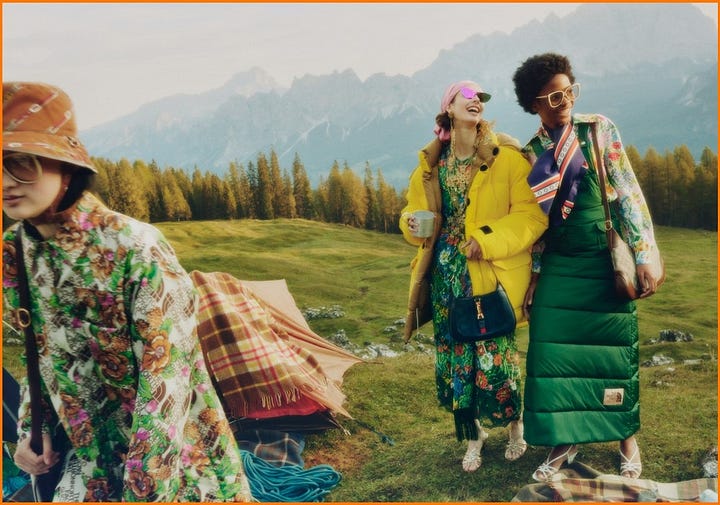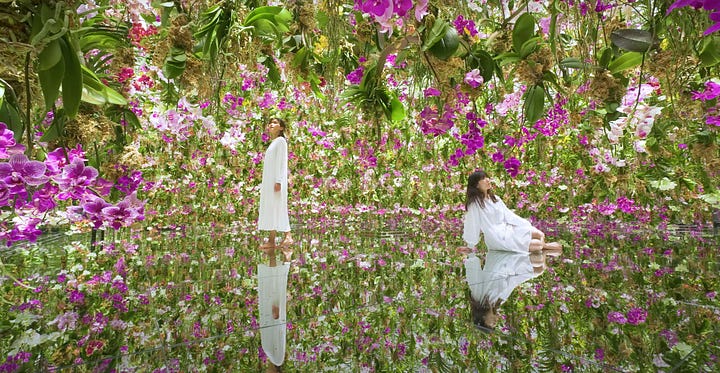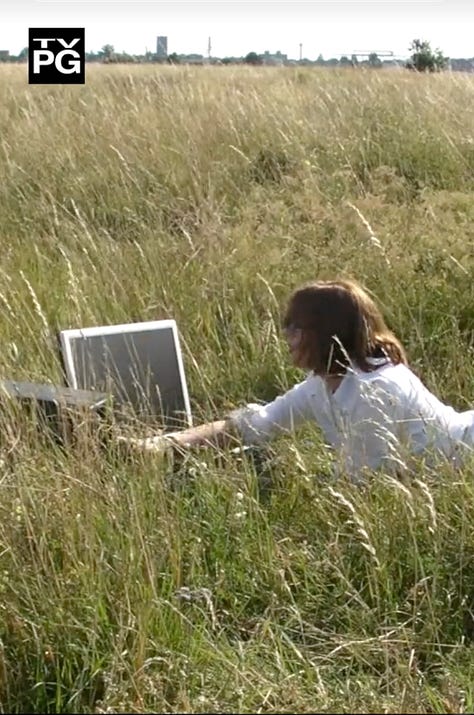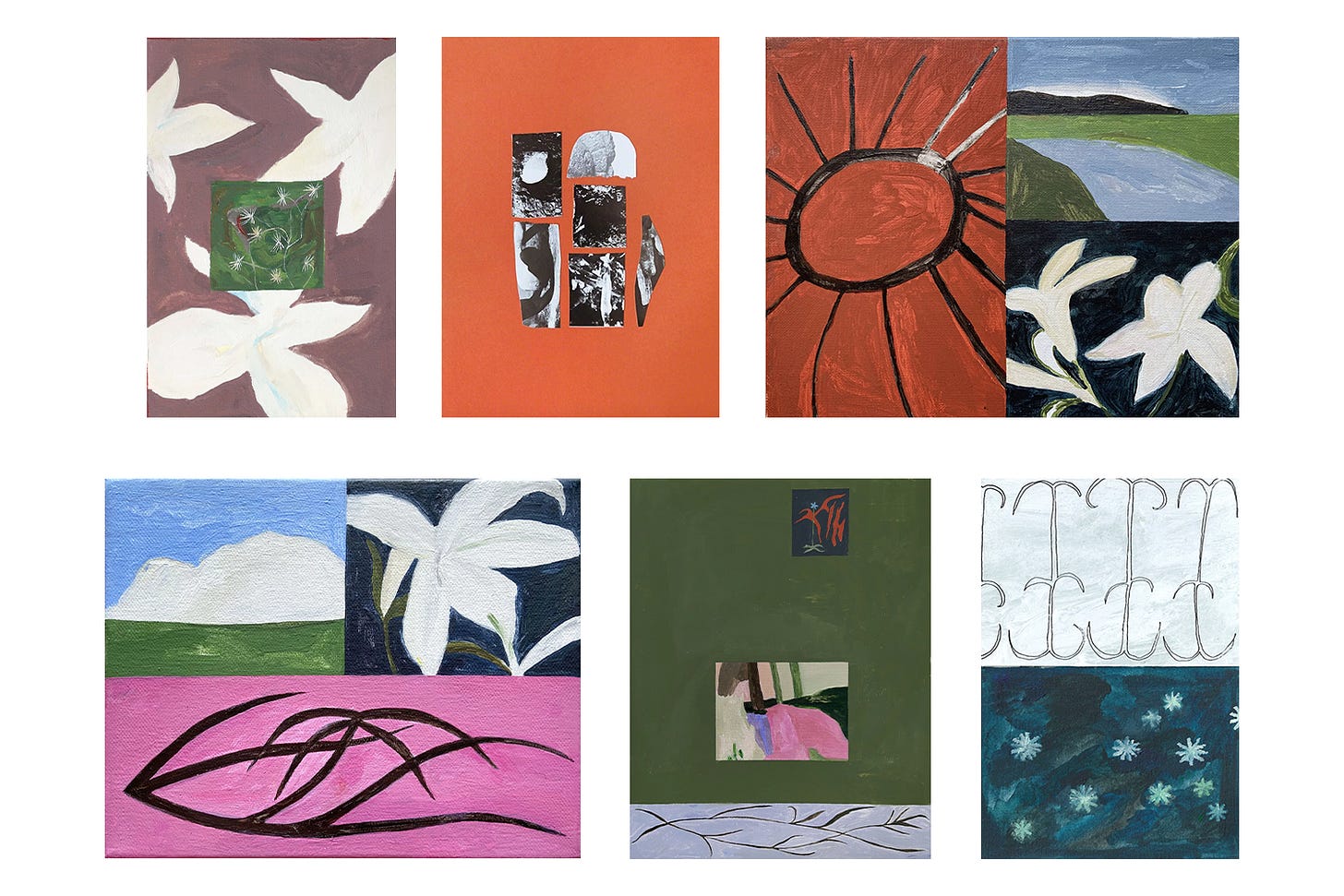I think it’s time for a review of what ‘Gorpcore’ has become. The term was originally coined by writer Jason Chen in 2017, utilizing the trail mix acronym Good Ol’ Raisins and Peanuts. It’s nature + fashion + practicality. Since then, consumers have drowned in stylish hiking gear and The North Face collaborations (Gucci, Comme Des Garcons, Maison Margiela, Kaws and Supreme to name a few).
Seven years later, the world looks different, and life seems to exist in some liminal space between the screen and the real world. We went back into the office (kind of). The Queen died. We experience major world events through a TikTok marketing machine.


Now, we want to be away from our jobs and close to nature more than ever, but are trapped in an employment agreement that has us chronically available; people now go so far as to manually brick their phones or return to flip phones in an attempt to “reclaim their lives.” Dumb phones are in, but screen time is still up.
Gorpcore was the late 2010’s biggest fashion trend that’s actually been around for thousands of years. But in 2022, Frank Ocean gave it the seal of approval and the rest is history. The irony, of course, is that the value of these “cool” outdoor products plummets if they’re actually used for their intended purpose. Writer Harvey James started to realize that “maybe this bastardized version of hiking gear isn’t for the hikers after all.”
I feel particularly protective about Gorpcore being a trend as I was raised in the Pacific Northwest. Growing up, every family had a pile of dirtied Salomons by their front door; they’re extremely functional and have been described as “The Ugliest Of Ugly Sneakers.” Recently, they’ve been embraced by the fashion community. I feel a bit bitter.
There’s a disconnect here. In a post-2020 world, we have to grapple with the hypocrisy of wanting to be present in nature while allergic to slowing down. Though our lives have operationally changed since remote work became the norm and we’re getting outside more than ever, we’re constantly available, and often expected to be so. This sentiment can perhaps be best exemplified by a video series created by Gen Z photographer and content creator Tati, who has accidentally become a voice of conscious internet engagement.



There’s something amusing yet so aesthetically representative of life and art right now within these videos. Weirdly, I think this is what Gorpcore has become – it’s no longer about the desire to look fashionable while hiking or performatively wearing merino wool socks on city streets. It’s an integration of nature, technology, and self awareness of how these all fit together at this moment in time. Tati points out the uselessness of the person, place, and work props in these videos. The computers are rendered nonfunctional, and the incredibly beautiful scape is around her only an accessary to her “working”.
I think it’s time we move on to Gorpcore 2.0, an aesthetic representation of the irony of our current situation; a facetious acceptance that we have become inseparable from technology and work. I think that Gorpcore 2.0 is a yes, and situation where we keep the hiking gear and actually go out and use it. We can accept digital art and find new and interesting ways to integrate it into public spaces.
Artist Leander Herzog and Milian Mori’s piece DOM2 includes a large-scale audio/visual installation in the woods. Implementing a digital piece with an unpredictable external environment means that the work and the space interact with each other and add context/visual layers to the end result. Herzog wrote that “[he] was a bit nervous about direct sunlight and shadows, but love what was going on here.”

ASMR barber haircuts are set in the Japanese countryside with a bullet train speeding along in the background. We can’t escape technology, so why not embrace it? Iconic artist collective teamLab specializes in immersive digital art experiences. (Their image was at the top of this post). Perhaps they said it best when they wrote “We believe that technology is not in conflict with nature but has the potential to complement it.”
There is an inevitability of our changing relationship with nature. Gorpcore originally was, lets face it, a kind of consumptive virtue signaling. Sometimes, it was in a productive nature. Chen aptly pointed out that, “It’s no accident that Black Lives Matter activist DeRay McKesson has worn the same Patagonia vest for nearly a decade. Sporting brands that give voice to your value system is its own form of silent protest.” For others, it was a way to placate uncomfortable feelings around a warming planet and social unrest.
I think Gorpcore 2.0 is an external representation of our complicated feelings towards how we live today. Life is overwhelming. You don’t have to install a chip in your brain or go off the grid. It’s unproductive to tell people to disintegrate technology from our lives when it’s become essential to how we live. Gorpcore 2.0 is somewhere in the middle.
Available Artwork
Alma Charry is a French mixed media artist who focuses primarily on the relationship we have to the world around us through engaging grids of flowers, symbols and landscapes. Her work is like a little encapsulation of moments and feelings, as she captures the energy between the things around us.

Shuhua Xiong is a Shanghainese, NY-based artist creating gentle and emotional works. Her paintings balance incredible energy and nostalgia, re-contextualizing organic matter in new gradient spaces and voids. You can tell she enjoys the play between technology and airbrush, which gives her work a really etherial quality.

Gus Stevens is a digital and film photographer, with a really special portfolio focusing on both natural landscapes and suburban life. I’ve pulled some of his landscape photos, which vibrantly capture color and light in a really satisfying way. The intense lighting in his work is often a beautiful contrast to the subject matter.




